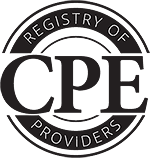This is a continuing part of our series on forensic accounting. Within this segment we discuss the concepts that are part of computer forensics known as cryptology.
The term cryptography is from Ancient Greek and means “hidden secret”. It is the practice and study of techniques for secure communications in the presence of adversarial behavior. Cryptography is about constructing and analyzing protocols that prevent third parties or the public from reading private messages. Cryptography starts with secrets. Various aspects in information security such as data confidentiality, data integrity, authentication and non-repudiation (where a statement’s author cannot successfully dispute its authorship) are central to modern cryptography.
Previous courses in this series have overviewed:
- Introduction to Forensic Accounting
- Focus on Document Review and Handwriting Analysis
- Focus Digital Forensics
- Focus on Computer Forensics - Part 1
Prerequisites
No advanced preparation or prerequisites are required for this course. However, it is recommended to take Other Segments of Preparing to be a Forensic Accountant courses by Lynn Fountain.
Preparing to be a Forensic Accountant: Focus Digital Forensics
Preparing to be a Forensic Accountant: Focus on Document Review and Handwriting Analysis
Preparing to be a Forensic Accountant: Focus on Computer Forensics - Part 1
Learning Objective
- Explore the concepts of modern and classic cryptography.
- Identify and examine types of cyphers used in cryptography.
- Discover and discuss concepts of public key transcription, hashtags, block and stream ciphers used in cryptography.
- Discover the concepts of cryptoanalysis.
Last updated/reviewed: March 26, 2024



Ask the instructor a question about this lesson